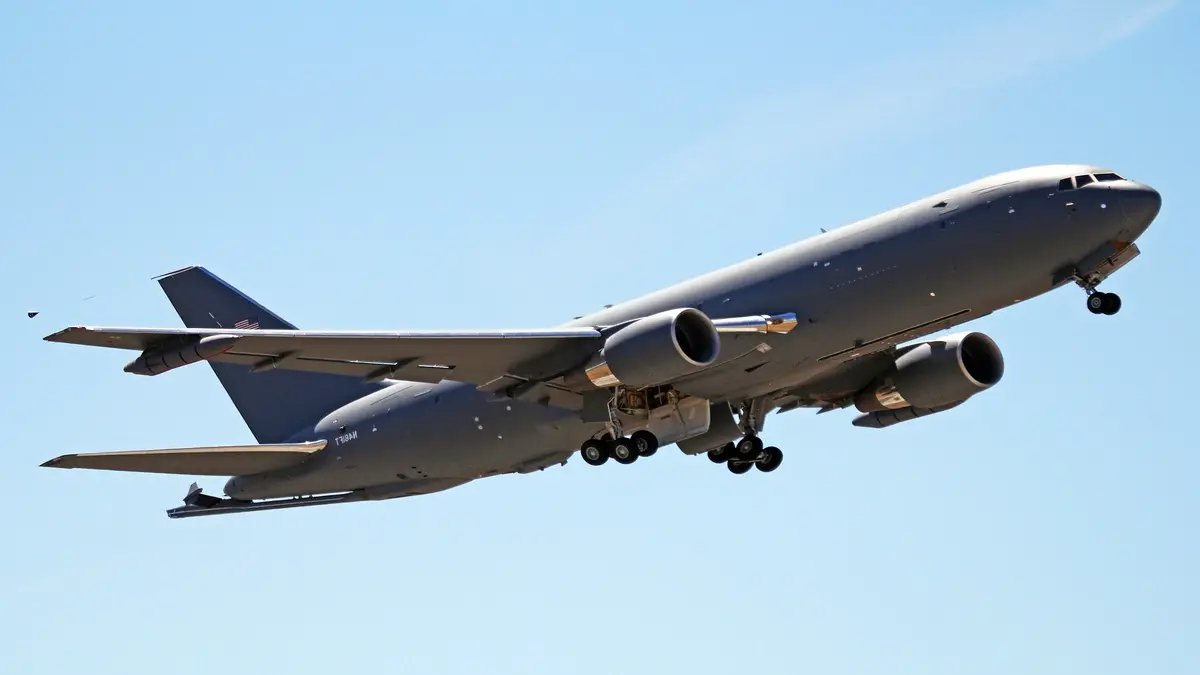“(June 17, 2025) – The U.S. Air Force has sent a large fleet of aerial refueling tankers to Europe and the Middle East as tensions rise in the Israel-Iran war. More than 30 KC-135 and KC-46 tankers departed from U.S. bases in the early hours of June 16, bound for strategic locations such as Germany, Spain, Italy, Greece and Turkey to provide in-flight refueling support to U.S. and allied aircraft operating in the region.
Strategic Redeployment and Official Rationale
The move of more than two dozen tankers to Europe and nearby bases is intended to “provide President Trump with options” amid rising tensions between Israel and Iran, according to Reuters. When asked, U.S. officials described the deployment as defensive, stressing that it supports current operations – including missile interception and potential evacuation – in the event of an attack. Without.
U.S. Defense Secretary Pete Hegseth reinforced this stance in a public statement:
“Over the weekend, I directed the deployment of additional capabilities to the CENTCOM area of responsibility. U.S. Defense forces are our top priority and this deployment is intended to enhance our defensive posture in the region.”
U.S. Tanker Fleet and Regional Assets
The two primary tanker platforms deployed include the KC‑135 Stratotanker and the more modern KC‑46 Pegasus, both of which are essential to extending the range and endurance of U.S. and allied combat aircraft:
- KC‑135 Stratotanker: In service since the late 1950s, this workhorse continues to support missions in Europe, the Middle East, and Africa.

A KC-135R Stratotanker refuels an F/A-22 Raptor - KC‑46 Pegasus: Designed to replace aging refuelers, with at least 30 units deployed today, it supports fighter jets such as the F‑22 and F‑35.
These tankers landed at Rammstein (Germany), Moron and Rota (Spain), Aviano (Italy), Preswick (UK), and Sauda Bay (Greece) – putting them within easy flying distance of the crisis area.
Other U.S. assets in the region
- U.S. Nimitz aircraft carrier strike group, redeployed to the Middle East
- **U.S. Navy destroyers with *Patriot/THAAD* systems
- Additional transport aircraft and surveillance drones

- USAF RQ-4 Global Hawk
Analysis: Why tankers matter
1. Tactical flexibility
Tanker aircraft are a key pillar of sustained air operations. They allow U.S. and allied fighters, reconnaissance aircraft, and tankers to remain airborne for longer periods of time—a strategic advantage in both defense and deterrence.
2. Signal of strength without direct conflict
By deploying assets close to the theater, the U.S. sends a clear message of commitment and readiness without starting a fight. Tankers are a visible, yet non-aggressive form of power projection.
3. Additional readiness
Tankers will be essential if Israel or the U.S. choose to attack deep Iranian targets, such as nuclear facilities. Rapid deployment for potential future actions Contingency planning suggests.
Broader implications
The deployment of tanker assets, coupled with aircraft carriers and missile-defense systems, is rapidly transforming the conflict into a regional US-backed military situation. Analysts warn that this could raise expectations of deeper involvement from US allies, especially after previous US assistance in missile deterrence.
Domestic US political debates are also heating up, with hawks pushing for a stronger alliance while separatists arguing against deeper involvement – reflecting growing pressure on President Trump to balance America First ideals with global leadership responsibilities.
As the conflict continues, the presence of refueling tankers will allow for rapid escalation if necessary. While the official line remains that of defense and support, the capabilities now available can be redeployed for offensive missions at short notice.
Read More: U.S. Ally Hosts Medium-Range Missiles: Indo-Pacific Power Tensions Rise
FAQs
The US has moved more than 30 KC-135 and KC-46 tankers to Europe and the Middle East to support its aircraft in the Israel-Iran conflict. These planes allow fighter jets and drones to refuel in the air, giving them more flight time. It also demonstrates America’s willingness to protect its allies without directly starting a fight.
President Trump has faced pressure to stick to his “America First” approach at home, but at the same time, US allies expect Washington to lead during an Israel-Iran war. Sending the tankers gives him options – it strengthens defenses in the region but avoids an immediate full-scale war.
Tanker aircraft are the backbone of long-range missions. They allow fighter jets like the F-22 and F-35 to fly deeper, reach targets faster, and stay in the air longer. Without them, U.S. and allied aircraft would have limited range and time. This makes tankers critical if tensions rise or attacks on Iranian nuclear sites are considered.
Analysts say the arrival of tankers, aircraft carriers, and missile-defense systems is making the situation more serious. It signals that the U.S. is prepared to act quickly if the situation worsens. While the official reason is defense, these assets could also be used for offensive missions. Many experts warn that this could attract more allies and push the war into a broader Middle East conflict.








Leave a Reply